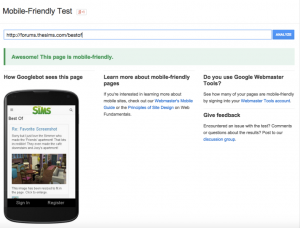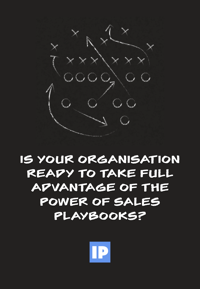The U.S. has a burnout problem: 76% of employees experience burnout on the job, while 28% feel burned out “very often” or “always.” Despite these numbers, 59% of employees are taking less time off than they normally would due to the pressures of our new normal, and 42% of employees working from home are not planning to take any time off to decompress. Headspace, a prominent mental health app, reported a 500% increase in requests from organizations related to employees’ mental health since the spring, while 70% of workers worldwide say they’re more stressed than ever before.
Organizations need to recognize and prevent burnout before it takes a toll on their company. Your workforce needs to be resilient enough to flourish in changing times, and you need to support a healthy work life balance that combats burnout. It starts by recognizing the symptoms and causes of burnout, and then learning how to leverage that knowledge to prevent it.
Burnout: symptoms and causes
Generally, burnout is caused by chronic mental, emotional, and physical exhaustion resulting from stress. It lessens the joy you feel from accomplishments and diminishes your sense of purpose and identity at work.
Symptoms of burnout
Wondering how you can tell if you’re experiencing burnout? Here are few frequent symptoms:
- Lack of energy: If you’re feeling tired all the time, you might be suffering from burnout. Stress and depression can sap your energy and motivation to complete even the most minor tasks.
- Physical health issues: Beyond simply feeling drained, burnout can have a serious effect on your physical health. Employees who frequently experience burnout are 63% more likely to call in sick and 23% more likely to take a trip to the emergency room.
- Negative emotions: Burnout takes an even greater toll on your mental health. The negative emotions resulting from burnout include irritability, anger, cynicism — especially about job-related issues — and general unhappiness. If stress and depression are your constant companions, burnout may be the cause.
- Disengagement: Feeling disengaged and unmotivated are major signs of burnout. Believe it or not, disengagement costs the U.S. up to $ 500 billion per year. Disengagement can result in negative customer interactions, more mistakes and accidents in the workplace, increased employee churn and absenteeism, and ultimately a lower bottom line.
- Feelings of isolation: Whether it’s because of a lack of support in the workplace or a suffocating company culture, loneliness and alienation are common symptoms of burnout. This can be a hard problem to solve, as when you feel irritable and disillusioned, you probably don’t want to spend additional time with your managers and peers.
Causes of burnout
Burnout is often the result of a confluence of factors. These are some of the most common:
- Lack of support: There’s little more demoralizing than trying to get your job done without support from your coworkers or — especially — from management. Gallup estimates that managers account for at least 70% of the variance in employee engagement scores across business units. If your manager isn’t helping you, or, worse, is actively hindering your work, it’s only a matter of time before you experience burnout.
- Stressful jobs: Workers in certain fields are more prone to burnout than others. Healthcare workers, soldiers, lawyers, teachers, and even customer service representatives may all experience burnout simply due to the nature of their jobs.
- Predisposition: If you have low self-esteem, perfectionist urges, or attach your self-worth and identity to your job, it can be much more difficult to avoid burnout.
- Unfairness: Disparate, unfair treatment is a surefire way to breed burnout. Failing to recognize and reward employees’ contributions, favoritism in work assignments, allocating resources unequally — the list goes on. When you see that others have it easier than you, or receive more accolades for the same amount of work, it’s hard to stay motivated.
- Disempowerment: A lack of control over your work can be incredibly frustrating. Whether due to micromanagement or a simple lack of trust, if you’re not given the freedom or resources you need to get the job done, burnout is likely to occur before long.
- Too many (or poorly defined) responsibilities: You’re constantly working overtime, answering messages after hours, or struggling to understand what’s expected of you. Sound like a recipe for burnout? While being overworked is a clear risk factor for burnout, dealing with ambiguous work responsibilities is just as dangerous. It’s hard to engage with your job if you can’t really say what your job is.

How to prevent — and recover from — burnout
Practicing self-care and developing an actionable strategy are the best ways to prevent and combat burnout. As Dr. Natalie Baumgartner, Chief Workforce Scientist at Achievers, says, “things that fundamentally support our well-being need to come first.” Try some of the following tips if you’re starting to see symptoms of burnout in your own life or your team members’.
Seek support from outside and inside the workplace
It’s very difficult to prevent burnout on your own, so developing a support network is key. Think about people who might be able to help at your workplace — whether co-workers or managers — but don’t stop there. Look to your family and friends for support, and consider engaging with others in hobbies, sports, and other activities you enjoy. The more people you have backing you, the better.
Communicate with leaders
One of the first steps you should take when experiencing issues that may lead to burnout is communicating about them with leaders at your organization. If you speak up when you notice something is wrong and your manager makes the time to truly listen to what you’re saying, that may be enough to head off burnout.
Of course, this isn’t always the case. Your direct supervisor may be part of the problem or simply unlikely to act on your concerns, no matter how you express them. If that’s the case, reach out to leaders at a higher level or an HR rep. There’s no guarantee that this will lead to an immediate resolution of the issues affecting you, but when done right, communication can be a powerful tool for keeping everyone in the workplace happy and productive.
Your organization should also provide the option of providing your feedback anonymously through surveys and an always-on feedback channel. This is to your company’s benefit as well, as a full three-quarters of employees are more likely to provide honest feedback in a survey than in face-to-face discussions with managers.
Eat well
Eating well is one of the building blocks of stress management. Unfortunately, when you’re stressed out, it’s easy to be drawn to comfort foods that actually hinder your ability to focus. To keep your energy up and reduce stress, practice healthy eating and ensure you’re getting all necessary vitamins and minerals. Try not to skip meals, either, which can negatively impact your metabolism.
Take time off
Sometimes the best way to head off burnout is to simply remove yourself from the source. Chances are that you’ve got some PTO just waiting to be taken advantage of — on average, U.S. workers only use 51% of their available time off. Spending some time away from work can give you the space you need to view your situation from a new, healthier perspective. After you’ve had the chance to recharge and recalibrate, you’ll be better equipped to address the underlying causes of burnout.
Explore your creativity
While employees who are passionate about their career are highly creative and successful, 80% of American and British workers feel pressured into being productive rather than creative. If you fall into this category, take a moment to ask yourself whether there’s an outlet for your creativity — on or off the job — that could help you feel more fulfilled and energized. If you’re able to spend some time regularly exercising your creative muscles on a project that engages you, you’ll experience less stress and more satisfaction in all aspects of your life.
Change your work habits
A change of pace or scenery can do wonders for improving your work experience. Whether it’s a new schedule that fits your needs better or the chance to try your hand at some different tasks, varying things up could be just what you need to stay engaged. You can also see whether your employer will give you more flexibility in terms of how you work, whether that be in terms of time or location.
Maintain a healthy work-life balance
Maintaining a healthy work-life balance is critical for staving off burnout. In addition to taking time off when you can and seeking more flexibility in your work arrangements, try working with your team and manager to set realistic deadlines and establish — or reinforce — the expectation that no one will answer messages outside of work hours. And see if your organization is open to initiatives like onsite childcare, volunteering opportunities, and pet days, all of which are great ways to keep your work and home lives in sync.
Practice mindfulness
When you’re feeling distracted or stressed, practicing mindfulness can help. Mindfulness lets you better understand what’s causing you stress, how you’re reacting, and what steps you can take to address the situation. It gives you the self-awareness you need to respond better in high-pressure moments and reduce the impact of stressors.
Start by slowing down and breathing deeply for a few moments. This lets you recognize what you’re feeling and how it’s affecting your body. Slow breathing takes you out of fight or flight mode so you can take stock of the situation and act purposefully.
Another key mindfulness technique is forgiveness. It’s impossible to avoid all sources of stress in your life, no matter what, and you’ll never be able to accomplish everything you set out to do. Accepting this rather than feeling guilty, mad, or frustrated is a difficult but powerful thing. It won’t happen overnight, but if you work at it, you’ll learn how to be gentle with yourself.
Exercise
Exercise is a fantastic way to relieve stress. Besides its obvious physical benefits, it’s also directly linked to mental sharpness and leads to quicker learning, greater mental stamina, more creativity, and refined concentration. Exercise helps you regulate your mood as well, leaving you better able to handle the ups and downs of your day-to-day existence.
Sleep
Getting enough quality sleep is one of the best ways to improve your mental and physical health. Poor sleep increases employees’ chances of developing chronic conditions like diabetes and heart disease, heightens risk of injury in the workplace, and results in productivity loss. If you’re having difficulty finding the time to sleep, see if you can rearrange your schedule and priorities to give yourself even an extra hour. And if you’re having trouble falling asleep, the practices discussed above — especially exercise, mindfulness, and eating well — can help.

How organizations can prevent burnout
There are dire consequences when employers fail to prevent burnout. A recent study estimated the annual cost of absenteeism is between $ 2,600 and $ 3,660 per employee. Unsurprisingly, the main causes of absenteeism were burnout, stress, and disengagement. Likewise, employees suffering from burnout were 2.6 times as likely to be actively seeking a different job. And even if those employees stayed, they had 13% lower confidence in their performance.
In times of crisis, finding ways to avert burnout is especially important. Being transparent about the ways you are attempting to improve employee well-being shows that you are committed to creating a healthier organization and more engaged workforce.
Fortunately, there are many ways to nip burnout in the bud. Here are four of the best.
Build trust
Trust is the cornerstone of a great organizational culture. But only 1 in 5 HR and engagement leaders agree that their employees deeply trust their company leaders, and 50% of employees don’t even view their HR department as trustworthy.
This is a major issue. If employees don’t feel comfortable expressing themselves or believe they can rely on others, they’ll get burned out much more easily. If employers do develop meaningful bonds with their employees, however, they’ll see a boost in both mental and physical health across the company.
To build trust in the workplace, leadership needs to be transparent and communicate often so that employees feel in the loop and understand how their efforts connect to the greater company mission. Regularly soliciting feedback, implementing an employee assistance program, prioritizing mental health, and promoting frequent recognition are also great ways to build a culture of trust in your organization.
Most of all, empower your employees by avoiding micromanagement and giving them the chance to take on new responsibilities. The trust you show in them by doing so will be paid back manyfold.
Spread appreciation
When employees know they’re appreciated, they produce great work: 90% say that receiving recognition motivates them to work harder. Employees who hear genuine words of recognition from peers, managers, and other leaders feel truly valued. And there’s a statistically significant correlation between recognition and sense of connection and belonging. This makes recognition one of the most powerful antidotes to burnout.
So how can you start building a culture of recognition? Social and monetary recognition are the two key components of any great recognition program. Both should be delivered frequently and in real time. To make this easy for your employees, look for a recognition platform that’s inclusive and gets everyone involved. All team members should be able to show appreciation to each other from anywhere with an internet connection and see all recognition activity using a company-wide newsfeed.
Your recognition solution should also support points-based rewards. This lets everyone in your organization provide and receive monetary recognition, and they can then redeem those points for rewards that are actually meaningful to them. This last point is critical: employees will look forward to redeeming their points for a reward that’s personally meaningful to them, rather than just being handed another Starbucks card or generic mug. In this way, the employee recognition program underlines their unique individual value to the organization.
“As a leader, your recognition goes a long way. Whether it’s celebrating a milestone or giving a simple thank you note, every recognition has the power to impact employee engagement and morale.” – Jeff Cates, CEO and President, Achievers
Don’t neglect the key role of leaders in establishing a culture of recognition either. When they act as recognition champions, employees will follow their example. Make training on the importance of recognition and best recognition practices a priority for every employee. Training is key given just one-third of organizations are training employees in how, when, and why to recognize their peers.
Give employees a voice
It’s startling, but only 26% of employees who feel burnt out have talked to their manager or HR about it. That’s why it’s critical to proactively gather feedback from employees on a regular basis to help identify individuals and teams that are at risk of burnout.
Employee surveys are the best way to do this, as the anonymity they provide lets team members answer candidly. Annual surveys aren’t enough, as by the time results are in, burnout will have already started to spread. Instead, use frequent pulse surveys to identify factors giving rise to burnout and give team members access to an always-on feedback channel so they can check-in whenever they need to.
“Ask team members how they are doing to open the door to the conversation about emotional challenges and struggles, and to ensure that employees know their leaders care and are thinking about them on a personal level.” – Carla Yudhishthu, Vice President of People Operations at Mammoth and ThinkHR
Once you’ve discovered the factors that are causing burnout in your organization, quickly act on them to show that you take these issues seriously. Managers should build an action plan in response to feedback collaboratively with their team so everyone is invested in fixing the problem. When employees know that their managers address problems head-on, they’re more likely to voice their opinions frequently, and they feel heard by leadership.
Align your culture and core values
Aligning your culture with your core values and getting employee buy-in can help prevent burnout. According to Achievers’ Culture Report, employees who felt their personal values were very well aligned with their company’s values were five times more likely to report being engaged, while 59% of employees whose values were not at all aligned with their employer’s were disengaged. Values alignment was the number one predictor of employee engagement.
Cultural alignment isn’t easy — it takes thoughtful and purposeful work. To start building a great culture at your company, ensure that your leaders exemplify your culture, weave your values into every aspect of your business, and foster connections between team members. These practices, together with frequent appreciation and acting on feedback, are the best ways to get everyone at your organization on the same page.
Business & Finance Articles on Business 2 Community
(157)







